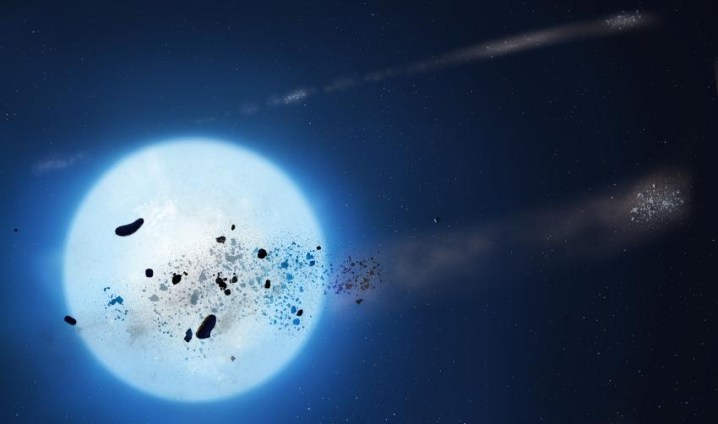One of the stranger facets of astronomy is contemplating what the fate of the Earth will be when the sun dies. Eventually, in billions of years’ time, the sun will inevitably run out of fuel and enter the final stages of its life, puffing up to a huge size called a red giant. When it does this, the sun will swallow Mercury and Venus completely — but the status of Earth is not quite so certain.
Researchers recently studied the status of dead stars called white dwarfs, which are the cores that remain after a red giant collapses. This gives a glimpse at what our own solar system will look like in 5 billion years. Earth may or may not be engulfed by the sun, but it certainly won’t be habitable any longer.
“Whether or not the Earth can just move out fast enough before the Sun can catch up and burn it is not clear, but [if it does], the Earth would [still] lose its atmosphere and ocean and not be a very nice place to live,” said researcher Boris Gaensicke of the U.K.’s University of Warwick in a statement.

The researchers looked at three particular white dwarfs for evidence of whether they had swallowed up other bodies in their systems such as asteroids, moons, and planets. These white dwarfs had fields of debris orbiting around them, and by studying this debris, the researchers could learn where it likely came from. These bodies get torn apart when they come too close to a white dwarf due to gravity, lead researcher Amornrat Aungwerojwit of Naresuan University in Thailand explained.
Pieces of the debris orbit the white dwarfs and cause dips in their brightness that can be seen from Earth. One surprising finding is that the conditions of these white dwarfs changed so quickly, according to the 17 years that the data covered.
“The simple fact that we can detect the debris of asteroids, maybe moons or even planets whizzing around a white dwarf every couple of hours, is quite mind-blowing, but our study shows that the behavior of these systems can evolve rapidly, in a matter of a few years,” Gaensicke said. “While we think we are on the right path in our studies, the fate of these systems is far more complex than we could have ever imagined.”
Applying this research to our own solar system, the Gaensicke speculated about the fate of our planet: “The sad news is that the Earth will probably just be swallowed up by an expanding sun, before it becomes a white dwarf. For the rest of the solar system, some of the asteroids located between Mars and Jupiter, and maybe some of the moons of Jupiter. may get dislodged and travel close enough to the eventual white dwarf to undergo the shredding process we have investigated.”
The research is published in the journal Monthly Notices of the Royal Astronomical Society.
Editors' Recommendations
- The world’s largest digital camera for astronomy is ready to go
- How to watch three crew members launch to the ISS on Thursday
- How to watch homecoming SpaceX astronauts fly overhead on Tuesday
- SpaceX sets target date for third test of world’s most powerful rocket
- How to watch Crew-8 arrive at the space station tonight




